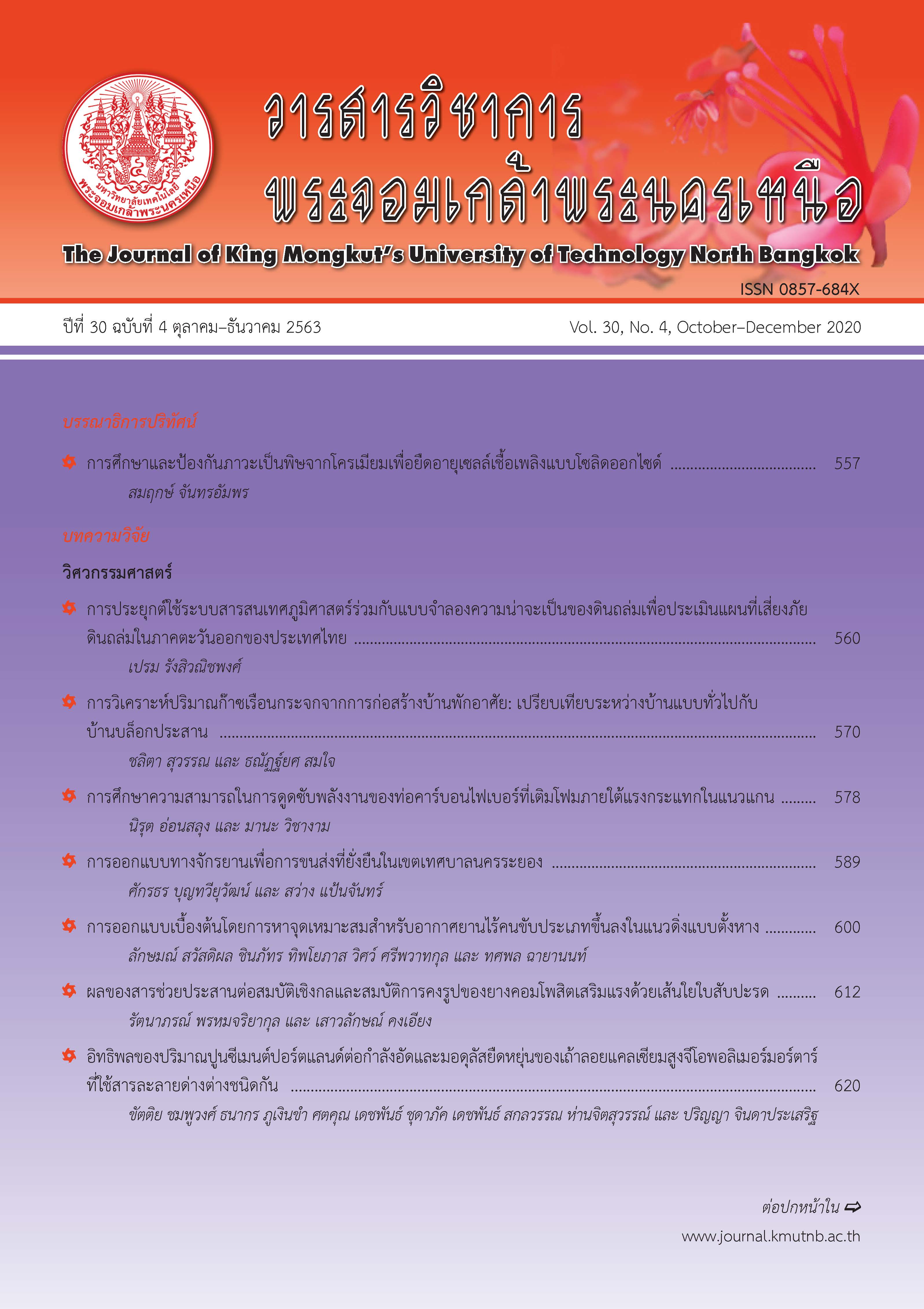Application of Geographic Information System with the Probability of Landslide Model for Assessing Landslide Hazard in the Eastern Thailand
Main Article Content
Abstract
The study of debris flow landslide in the Eastern Thailand applies Geographic Information System (GIS) and landslide probability model by using maximum daily rainfall data from 9 precipitation stations for assessing landslide hazard map at 5, 10, 50, and 100 year return periods. The results showed that most high-risk areas were located in Trat and Chanthaburi Provinces especially in Banthat Mountain Range and Khao Soi Dao Mountain areas. The probability of landslide in the Eastern region of Thailand would gradually increase along with the longer return period scenario. For 100 year return period, areas with 80% probability of landslide would expand to cover 25 percent of the total area of the eastern Thailand. Furthermore, this research also revealed the damage cost from landslide in the eastern region. The average landslide damage cost in the eastern region is approximately 0.4 million Baht per square kilometer at 5 year return period with the increasing effect to 1.8 million per square kilometer at 100 year return period.
Article Details
The articles published are the opinion of the author only. The author is responsible for any legal consequences. That may arise from that article.
References
[2] K. E. Trenberth, “The impact of climate change and variability on heavy precipitation, floods, and droughts,” Encyclopedia of Hydrological Sciences, pp. 1–11, 2008.
[3] D. Komori, P. Rangsiwanichpong, N. Inoue, K. Ono, S. Watanabe, and S. Kazama, “Distributed probability of slope failure in Thailand under climate change,” Climate Risk Management, vol. 20, no. 2018, pp. 126–137, 2018.
[4] L. Ciabatta, S. Camici, L. Brocca, F. Ponziani, M. Stelluti, N. Berni, and T. Moramarco, “Assessing the impact of climate-change scenarios on landslide occurrence in Umbria region, Italy,” Journal of Hydrology, vol. 541, pp. 285–295, 2016.
[5] J. D. Robinson, F. Vahedifard, and A. AghaKouchak, “Rainfall-triggered slope instabilities under a changing climate: Comparative study using historical and projected precipitation extremes,” Canadian Geotechnical Journal, vol. 54, no. 1 pp. 117–127, 2017.
[6] W. Inruang and T. Chaipimonplin, “The prediction of landslides risk areas in Uttaradit province by applying geo-informatics technology with an artificial neural network,” Journal of Social Sciences Srinakharinwirot University, vol. 18, pp. 191–207, 2015 (in Thai).
[7] S. Soralump, “Rainfall-triggered landslide: From research to mitigation practice in Thailand,” Geotechnical Engineering Journal of the SEAGS & AGSSEA, vol. 41, no. 1, pp. 1–6, 2010 (in Thai).
[8] S. Pomthong and D. Asavasuthirakul, ”Analysis of landslide risk area in Phetchabun province,” Journal of Geoinformation Technology of Burapha University, vol. 2, no.3, pp. 41–52, 2017 (in Thai).
[9] B. Boongthong, “An analysis of areas susceptible to landslide hazard in Chanthaburi province,” M.S. thesis, Department of Geography, Faculty of Education, Ramkhamhaeng University, 2001 (in Thai).
[10] K. Arora and V. P. Singh, “A comparative evaluation of the estimators of the log pearson type (LP) 3 distribution,” Journal of Hydrology, vol. 105, no. 1–2, pp. 19–37, 1989.
[11] S. Kawagoe, S. Kazama, and P. R. Sarukkalige, “Probabilistic modelling of rainfall induced landslide hazard assessment,” Hydrology and Earth System Sciences, vol. 14, pp. 1047–1061, 2010.
[12] P. Rangsiwanichpong, S. Kazama, and D. Komori, “Assessment expected annual damage cost of landslides in Thailand,” in Proceeding Japan Society of Civil Engineering Conference; Tohoku Branch, 2016, pp. 1–2.
